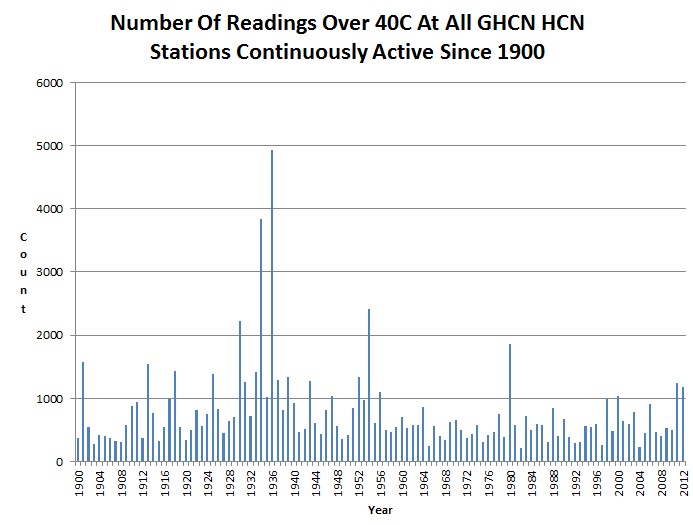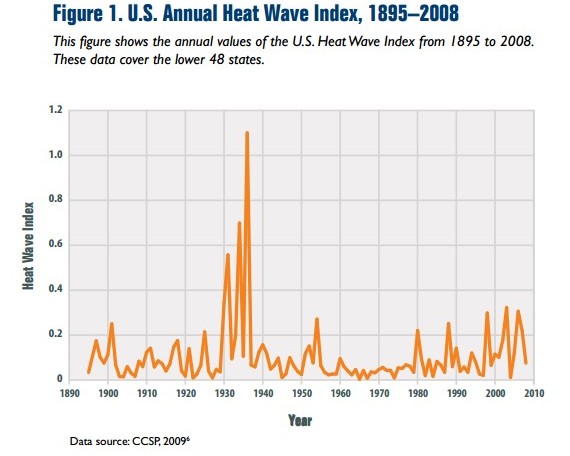NASA’s James Hansen wrote this last year
We conclude that extreme heat waves, such as that in Texas and Oklahoma in 2011 and Moscow in 2010, were “caused” by global warming, because their likelihood was negligible prior to the recent rapid global warming.
US Politics | AMERICAblog News: Quarter to half of species on earth may die from global warming
This claim is not supported by the historical record, which shows that the 1930s were much hotter.
The EPA says the exact opposite of Hansen.
Heat waves occurred with high frequency in the 1930s, and these remain the most severe heat waves in the U.S. historical record (see Figure 1). Many years of intense drought (the “Dust Bowl”) contributed to these heat waves by depleting soil moisture and reducing the moderating effects of evaporation.
• There is no clear trend over the entire period tracked by the index. Although it is hard to see in Figure 1 (because of the extreme events of the 1930s), heat wave frequency decreased in the 1960s and 1970s but has risen since then (see Figure 1).
www.epa.gov/climate/climatechange/pdfs/print_heat-waves.pdf
The US had four times as many 40C readings in 1936 as it did in 2012. The summer of 2012 would have been considered a fairly normal summer prior to 1960.




so, if deforestation and desertification contributed to the 1930s droughts and heatwaves, would it not stand to reason that reforestation of desert areas could contribute to fewer droughts and heat waves – not to mention capturing CO2? Or is it better to destroy modern civilization by banning energy consumption?
They completely lost me when they stopped focusing on global temperature and started to get interested in assigning attributions to random weather events.